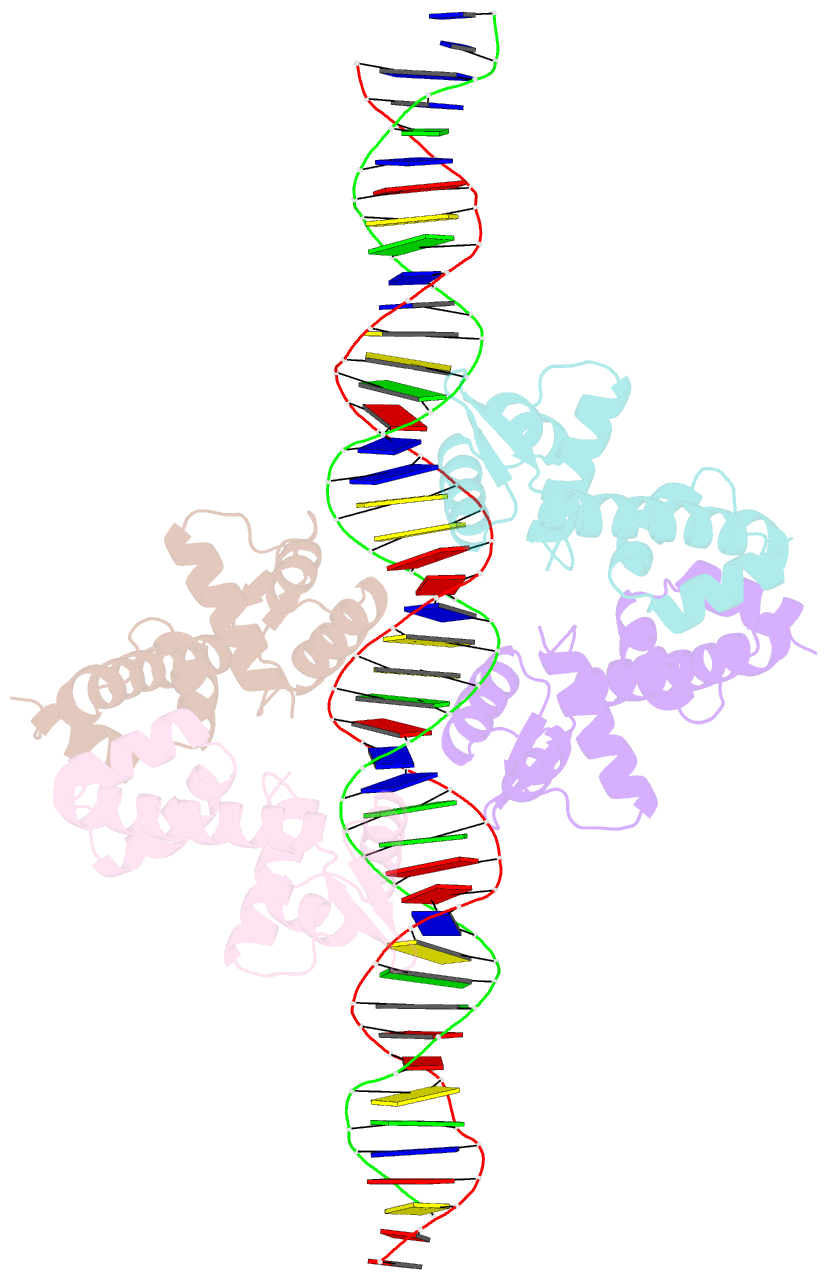Summary information and primary citation
- PDB-id
- 1f5t; SNAP-derived features in text and JSON formats;
DNAproDB
- Class
- transcription-DNA
- Method
- X-ray (3.0 Å)
- Summary
- Diphtheria tox repressor (c102d mutant) complexed with nickel and dtxr consensus binding sequence
- Reference
- Chen CS, White A, Love J, Murphy JR, Ringe D (2000): "Methyl groups of thymine bases are important for nucleic acid recognition by DtxR." Biochemistry, 39, 10397-10407. doi: 10.1021/bi0009284.
- Abstract
- The expression of diphtheria toxin is controlled by the diphtheria toxin repressor (DtxR). Under conditions of high iron concentration, DtxR binds the tox operator to inhibit transcription. To study how DNA binding specificity is achieved by this repressor, we solved the crystal structure of the nickel(II) activated DtxR(C102D) mutant complexed with a 43mer DNA duplex containing the DtxR consensus binding sequence. Structural analysis of this complex and comparison with a previously determined DtxR(C102D)-Ni(II)-tox operator ternary complex revealed unusual van der Waals interactions between Ser37/Pro39 of the repressor helix-turn-helix (HTH) motif and the methyl groups of specific thymine bases in the consensus binding sequence. Gel mobility shift assays utilizing deoxyuridine modified duplex DNA probes proved the importance of these interactions: the four methyl groups shown to interact with Ser37/Pro39 in the crystal structure contribute a total of 3.4 kcal/mol to binding energy. Thus, in addition to making base-specific hydrogen-bonding interactions to the DNA through its Gln43 residue, DtxR also recognizes methyl groups at certain positions in the DNA sequence with its Ser37 and Pro39 side chains, to achieve binding specificity toward its cognate operator sequences.





